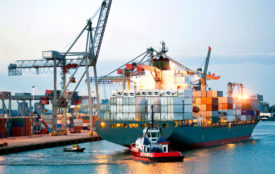“Cetrovo 1.0”: China builds the lightest train
Carbon fibres replace steel and aluminium and make the vehicle unique worldwide.
With the “Cetrovo 1.0”, the Chinese railway industry has presented the first commuter train made almost exclusively from carbon fibre composite material (CFRP). Even the bogie frame, which supports the axles and wheels, is made from this lightweight material. The vehicle is eleven percent lighter than a conventional train, which is largely made of steel and aluminium. According to manufacturer Qingdao Sifang Rolling Stock Co, a subsidiary of China Railway Construction Corporation, the new train requires seven per cent less electricity than today’s conventional vehicles.
Driver no longer necessary
The Cetrovo 1.0 reaches a top speed of 140 kilometres per hour. It is fully automated and therefore does not require a driver. If obstacles are encountered, emergency braking is initiated automatically. The factory tests have been completed so that it can be used this year in the underground railway network of Qingdao, a city of nine million inhabitants and the former German colony of Tsingtao.
CFRP components consist of carbon fibres that are woven together. They can be arranged in such a way that particularly stressed regions are reinforced. Finally, they are impregnated with resin so that they hold together. Trees are constructed in a similar way, consisting of cellulose fibres glued together with lignin.
Drastic drop in price
The Chinese company has benefited from the fact that the price of carbon fibres has fallen steadily in recent decades. It was once a luxury material that was mainly used in the aerospace industry. Today, it is even used in cars and bicycles.
In the 1980s, it cost around 200 dollars per pound (454 grams). By the end of the 2000s, the price had fallen to between 30 and 50 dollars per pound. Today, prices for industrial-grade carbon fibres are between seven and 15 dollars per pound. However, compared to traditional materials such as steel or aluminium, components made from CFRP are still much more expensive, which is mainly due to the complex manufacturing process.
Source
The report was written by the editorial team of “pressetext.com” (Wolfgang Kempkens) 2024 – the article may not be redistributed without authorisation! | Translated with www.DeepL.com/Translator








